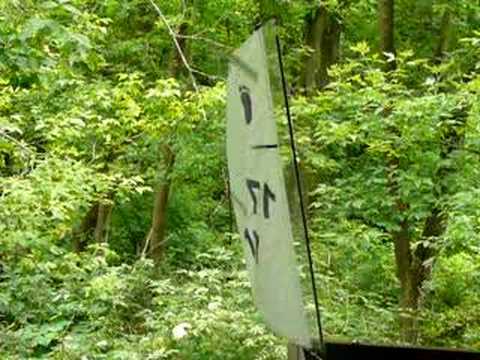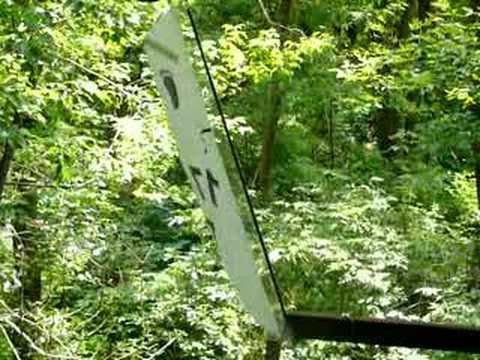Thanks for the comment Bill. Made me doubt myself, so went back to the water & guess what, You were right. Sorry for the duff gen guys.
The incident sitting head to wind, I remember now, was with a high aspect ratio sail I tried where the mast was 700 mm long, foot 270mm, pivot 100 aft of the mast. (The hull carried this sail amazingly well, in light airs of course). The top of the mast was behind the pivot point, which put the C of E too far back & the boat weather-cocked, stalled, & wouldn’t steer into wind. Tipped it forward, problem solved.
The rig I used to retest was mast 500mm long, boom 300, pivot 100 aft of mast with a sail very similar in shape to Ian H-B’s Tane. I did as I suggested previously bending the wire @ the top of the pivot, reducing mast rake angle & moving the C of E forward.
Initially the boat pointed higher & weather helm was reduced but never completely went away. The point, to which I incorrectly referred to previously, happened quite suddenly, the result being the best & virtually only point of sail was a broad reach. It was impossible to turn through the wind as on a normal tack & even needed considerable motion to accomplish the turn down wind where control was poor. I only did this manoeuvre once before tipping the rig back to a better position.
To further try to reduce the weather helm to the hands off stage that others have achieved I began to trim the leech of the sail gradually. After three trims I ended up with a triangular sail, no reduction in weather helm, & diminished performance, I presume due to reduced sail area & loss of efficient sail shape.
I aborted any further experimentation that morning as I was now quite wet from the rain & had very little sail left to play with.
I hope this has gone part way to restoring any credibility I may have once had. Keep at it men.
I look forward to hearing how things went at Sheboygan?


